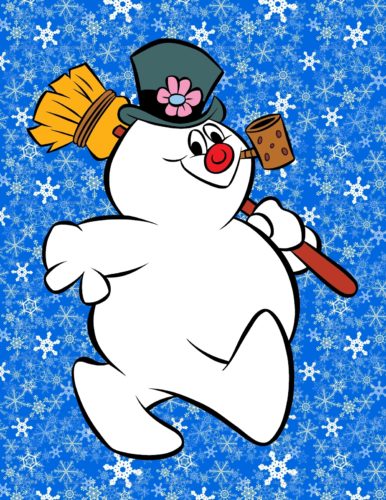
Not Quite Horror contains reviews of films not traditionally considered horror films. By analyzing them as horror films (identifying the monster, discussing the shared worry for the audience and the main characters, and understanding the depth of horror available to the viewer), who knows? There’s more than one way to watch a movie.
Frosty the Snowman (1969)
The Monster: Professor Hinkle. His hat brings snowman Frosty to life. Frosty is a simple, trusty soul who would be banished into the void without this hat, but the lousy magician insists upon having it back because the hat is his property. Hinkle never seems to grasp morality beyond the concept of private property, and is only sent packing when Santa threatens to stop bringing him more material possessions to obsess about.
The Horror: Hinkle chases Frosty and his friend Karen into the dark of the woods. When Frosty brings Karen into a greenhouse to keep her from dying of exposure, Hinkle locks both inside. Frosty melts to the ground because he chose saving his life, and the life of a little girl, over returning a hat to an unstable man. This slow, deliberate murder could come from an animated Saw or Hostel film.
The Shared Fate: Frosty teaches children and adults that sweet, innocent things can be destroyed because it pleases the selfish desires of one monstrous human being. What does it offer as a solution? Santa Claus saves the day and promises Frosty can return each Christmas because he is made of Christmas snow?
There is no comfort in this for any child looking past the singing and dancing. The innocents taken away are not made out of Christmas snow, after all.
— I am indebted to Noel Carroll’s The Philosophy of Horror for his ideas on defining horror, as well as John Skipp and Craig Spector’s article “Death’s Rich Pageantry, or Skipp & Spector’s Handy-Dandy Splatterpunk Guide to the Horrors of Non-horror Film†in Cut! Horror Writers on Horror Film for a similar idea.–
–Axel Kohagen
